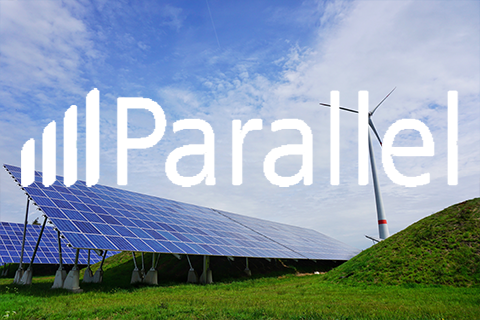Parallel Wireless Open RAN Helps Vodafone to Modernise Legacy Networks
The telecom industry is capital intensive, so every dollar and every cent spent on new infrastructure needs to be justified. The biggest expense for mobile operators has always been the RAN, accounting for around 60% of CAPEX. With regards to the RAN OPEX, accounting for 65% of the overall MNO OPEX, a sizeable portion is used for the increasingly more expensive maintenance of older mobile generations.
The Open Compute model of the data centre has the potential to help operators move away from proprietary hardware to a virtualised software-enabled network architecture. This software approach is not new for 4G networks but is rare for older Gs: (2G, 3G, 4G). For the legacy network, MNOs are tied into a particular RAN vendor: as RAN hardware from vendor 1 cannot be mixed and match with hardware vendor 2. Even 3G hardware from vendor 1 cannot work with 4G hardware from the same vendor. That is why some of TIP’s (Telecom Infrastructure Project initiatives by Facebook) highest-profile activities are aimed specifically at the RAN, where this proprietary nature of several interfaces has limited operators from using more than one vendor[1]. Greater openness, enabled with Parallel Wireless Open RAN across all Gs, helps service providers to “virtualise” their RAN infrastructure not just for 4G, but for 2G, 3G as well allowing them to modernise the networks and turn them into unified cloud-native architecture across current or future Gs. In this virtual RAN (vRAN), the hardware and software is disaggregated and an operator runs baseband processing functions as software programs on commodity servers, rather than dedicated equipment. This allows to aggregate hardware for greater efficiency and cost savings.
The Challenge
High operational costs make legacy 2G and 3G deployments very capital-intensive for MNOs. As newer technologies are being deployed operators are faced with increasing operational complexity and resulting the high cost of managing multiple G’s. Parallel Wireless 2G/3G/4G/5G unified software is the solution to this issue. Owing to the way they have been designed, a software-based approach for older G’s has previously been unheard of, making it impossible to reconfigure legacy 2G and 3G networks to support newer communications standards such as 4G, and eventually 5G.
Parallel Wireless technology has been designed for open interoperability through the GPP-based baseband processing platform, radio hardware, software and simplified business model to support all past, present, and future G’s for a better service to the end-users.
By disaggregating hardware and software, the Parallel Wireless software platform helped many operators, including Vodafone Turkey to modernise their legacy network to support subscribers on all G technologies via cloud-native ALL G software.
The solution is enabled by these components:
- Converged Wireless System (CWS) – This all-in-one, multi-technology, SDR (software-defined radio) GPP-based “white box” base station allowed any MNO with the legacy infrastructure to replace legacy 2G systems with fully virtualised 2G/3G/4G/5G technology and run 2G and 4G simultaneously on the same base station to provide superior data and voice services to the end-users and businesses. Multi-technology CWS nodes are easy to deploy and maintain and enable a clear technology evolution from 2G to 3G/4G/5G which does not require additional hardware installations.
- HetNet Gateway (HNG)- This ALL G software platform virtualises ALL G RAN and core functions (i.e. vBSC for 2G, vRNC for 3G, small cell and core gateways for 4G) to lower the cost of RAN through simplification and automation of ALL G networks. The software enables a unified architecture through abstraction of traditional RAN and core network functions on a COTS server. The HNG enables an Open RAN architecture by using standards-based and open interfaces between network components and as a result, simplifies network management and integration of new RAN products into the core of the network. It also provides seamless mobility and low latency for the best subscriber experience for end-users on 2G, 3G and 4G today, and on 5G in the future.
Benefits to Operators
The world’s only virtualised unified 2G/3G/4G/5G Open RAN helps global MNOs simplify deployments, resulting in much lower CAPEX and OPEX through:
- Installation simplification and increasing flexibility and sustainability.
- Open interoperability on the GPP-based baseband processing platform, radio hardware, and software.
- Simplified business model for a comparable service that is provided through traditional systems.
- 5G readiness through the extension of current RAN investments in the software-based architecture
The technical consequences are also sizeable. Radio network processing is intensive, real-time, and complex. Until now it has relied on the optimised software and hardware capabilities, working in tandem with specialist vendors. To achieve cost savings and reduce operational complexity, a standardised RAN needs to be open and automated.
Traditional 2G voice-only and broadband 3G or 4G networks require high-cost and often bulky equipment to deploy and operate. These types of equipment need large spaces for storage, have a short life cycle, and consume energy. Besides, hardware-based networks are difficult to upgrade. By shifting networks to virtualised TIP Open RAN architecture like Parallel Wireless’s technology, telecom operators can overcome all these problems, modernise their networks, and deliver coverage to every single subscriber at a much lower cost.
The GSM Association (“Association”) makes no representation, warranty or undertaking (express or implied) with respect to and does not accept any responsibility for, and hereby disclaims liability for the accuracy or completeness or timeliness of the information contained in this document.

